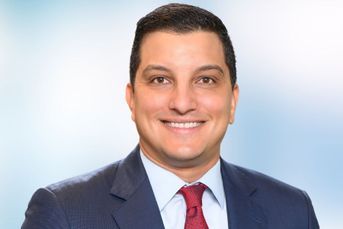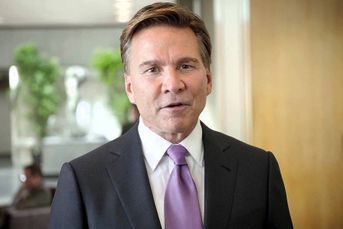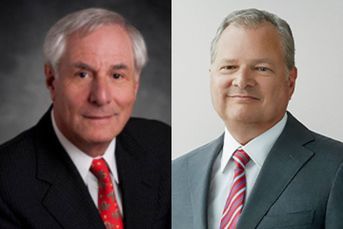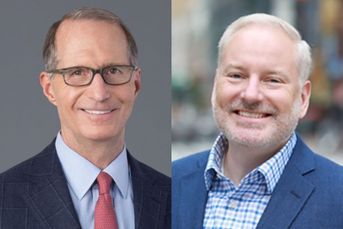How confusing are the fees brokers charge?
Although a common cost estimate is 100 basis points of assets under management, a new Personal Capital report finds advisory fees at large firms ranging from 1.25% to 3%.
Financial advisers get itchy when talking about fees they charge clients.
They tend to sweat a bit, looking down at the ground like it was littered with hundred dollar bills.
In other words, fee chat makes some advisers uncomfortable. It’s no wonder. Human nature dictates the response. Talking about money and how people are paid is not pleasant and can be awkward.
On top of that, fees brokerage firms charge are extremely confusing and opaque.
As my colleague Mark Schoeff Jr. reported this week, the Securities and Exchange Commission is taking notice.
In fact, SEC Chairman Jay Clayton said Wednesday the agency is targeting complex and hidden fees that can harm investors — both through enforcement and by clarifying disclosure requirements.
In a speech in New York, Mr. Clayton highlighted examples of opaque costs, including when an investor is put into an expensive mutual fund share class rather than a lower-cost one in the same fund; when a financial adviser uses fund assets to pay expenses their firms should cover; and when brokers secretly mark up securities prices to increase their profits.
Consumers also are paying attention. That’s in large part because investors are more educated than 10 or 20 years ago, and they also still feel burned by the market collapse of 2008 during the credit crisis. And the Department of Labor’s new fiduciary rule is forcing firms to simplify and make standard the commissions and fees they charge clients in retirement accounts.
Understanding how much a client pays an adviser is important. It’s well known that high fees on brokerage accounts can erode long-term gains needed to pay for retirement or a college education, for example.
In the spring, I spoke with a wide variety of brokerage executives and advisers about fees, and reported that the standard advisory fee in the industry is 100 basis points, with the adviser and asset manager splitting the charge. Advisory and wrap account fees at large firms can range from 75 to 190 basis points of a client’s assets under management.
That’s why a new report by Personal Capital, a so-called hybrid robo with human advisers that competes against the large firms for clients, is surprising. Citing the Form ADV filings for six large national brokerage houses, the report lists advisory fees ranging from 1.25% to a high of 3% of a client’s assets under management.
The report also extrapolates an “average fund fee,” calculated by Personal Capital by using data from earlier this year, varying from 33 basis points to 50 basis points.
It then calculates a “total estimated fee” of between 1.7% and 3.5% of a client’s AUM.
The report is quick to note that the total estimated fee for the large firms is “not meant to represent the average fees” clients pay, but rather “what an investor could potentially pay.”
The level of fees, as reported by Personal Capital, is high, no doubt.
Some will regard the report as self-serving for Personal Capital. It’s working to take away accounts from large national firms like Ameriprise Financial, UBS and Morgan Stanley, which it lists as the three highest-fee shops in its report. Ameriprise, for example, charges an advisory fee of 1.75% to 3% of AUM, and UBS and Morgan Stanley charge, respectively, 2% to 2.5%, according to the report.
Personal Capital’s advisory fee ranges from 79 to 89 basis points, while the lowest fee cited in the report is Charles Schwab, which charges just 28 basis points for its Schwab Intelligent Advisory.
Ameriprise, for one, disputes the Personal Capital report. Spokeswoman Kathleen McClung said the company disagrees with Personal Capital’s methodology.
The report “does not reflect the actual experience of clients or the breadth of investment options available at Ameriprise,” she said. “The average advisory fee our clients pay is approximately 1% and varies based on the products and services each individual client wants and needs.”
Ms. McClung said separately managed accounts may carry a higher advisory fee, but they are options for some high-net-worth clients who want access to institutional money managers.
A Morgan Stanley spokeswoman confirmed the numbers in the report. UBS did not comment.
“We’re not shocked that these firms are adding confusion to their own disclosures,” said Personal Capital CEO Jay Shah. “If institutions charge fees substantially different from their public schedules — which is a central theme of our report — we encourage them to modify their schedules to be more transparent and comprehensible to the client.”
By focusing on high fees as reported in the large firm’s disclosure to the SEC, the Personal Capital report is putting a spotlight on the thorny issue of understanding what firms are really charging clients.
What level of service is the client receiving from the adviser as part of the advisory fee? Does that include financial planning, or is that a separate charge? Are such high fees only seldom charged and in special circumstances?
Advisory fees charged by brokerage firms simply should not be so difficult to fathom. It’s enough to make an adviser break into a sweat.
Learn more about reprints and licensing for this article.








